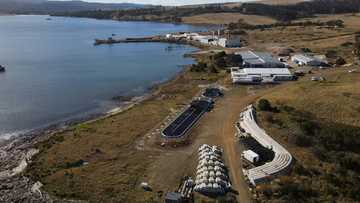Scientist Finally Find Possible Noah’s Ark Beneath the Surface After Thousands of Years
- Archaeologists have uncovered compelling evidence at Durupınar Formation near Mount Ararat, suggesting remnants of Noah’s Ark may lie beneath the surface
- Ground Penetrating Radar scans have detected a chemical imprint, wooden fragments, and hall-like structures, sparking intrigue among researchers and biblical scholars alike
- While scientific debate continues, soil analysis and radar technology provide intriguing clues that could redefine historical perspectives on one of the Bible’s most enduring stories
Archaeologists made a groundbreaking discovery at the Durupınar Formation near Mount Ararat, Turkey, using Ground Penetrating Radar to identify possible remnants of Noah’s Ark.
The team reportedly uncovered a chemical imprint, pieces of wood buried underground, and the shape of a hall, raising speculation about a man-made structure beneath the surface.

Source: Getty Images
Biblical significance of the discovery
According to the Bible, Noah’s Ark saved humanity and animal species from a catastrophic flood over 4,300 years ago.
The latest GPR scans appeared to align with biblical descriptions, suggesting corridors, hallways, and a three-deck structure, which corresponds with Genesis 6:16, stating:
"Make a roof for the ark, and finish it to a cubit above, and set the door of the ark in its side. Make it with lower, second, and third decks."
Findings from radar scans and soil analysis
Independent researcher Andrew Jones, affiliated with Noah’s Ark Scans, led the investigations.
His GPR analysis identified a 13-foot tunnel running through the centre of the formation and three layers beneath the earth, consistent with the three-deck structure mentioned in the Bible.
Further soil analysis revealed higher potassium levels and organic matter inside the formation, suggesting possible traces of decomposed wood.
William Crabtree, another researcher, noted that potassium levels were 40 per cent higher than the surrounding soil, supporting the hypothesis that the site may have once contained wooden remnants of an ancient vessel.

Source: Getty Images
Historical context and expert opinions
The Durupınar Formation, located 18 miles south of Mount Ararat, was first documented in 1948 when heavy rains and earthquakes exposed its unusual structure.
Over the years, experts debated whether it was a natural geological occurrence or the remains of Noah’s Ark.

Read also
Remains of Saint Teresa of Jesus found after 400 years, displayed publicly for the first time
While some scientists remain sceptical, believing the formation resulted from natural mudflow debris, others argue the findings could indicate something far more extraordinary.
Researchers noted angular structures as deep as 20 feet beneath the surface, features that could represent rooms below a deck-like platform.
Ongoing investigations at the Durupınar Formation will employ advanced radar technology and additional soil testing to uncover further evidence.
New Earth with conditions suitable for people found
Legit.ng earlier reported that in a finding published in the journal Astronomy & Astrophysics recently, a 'super-Earth' planet was found outside of the solar system that could have conditions suitable for life.
According to experts at the University of Oxford, the planet known as HD 20794 d has a mass six times greater than Earth's and orbits within the 'habitable zone' of a star similar to the sun.
Source: Legit.ng



